Blogs

Understanding Monel Price: A Comprehensive Tutorial on Market Trends and Factors
Introduction
Monel, a series of nickel-copper alloys, stands as a testament to engineering excellence, prized for its remarkable strength and resistance to corrosion across a myriad of environments. With a typical composition of approximately 63% nickel and 28% copper, these alloys are further enhanced by the inclusion of elements like iron and manganese, setting the stage for exceptional performance in demanding applications.
From the depths of marine engineering to the complexities of chemical processing and the precision required in aerospace, Monel’s versatility is unmatched. As procurement managers navigate the intricacies of sourcing these materials, understanding the market trends, pricing dynamics, and global supply chain considerations becomes essential.
This article delves into the multifaceted world of Monel, exploring its properties, applications, and the factors influencing its market trajectory, equipping decision-makers with the insights needed to optimize their procurement strategies in a rapidly evolving landscape.
Introduction to Monel: Composition and Properties
This metal includes a range of nickel-copper materials, including those with monel price, renowned for their remarkable strength and resistance to corrosion in various settings. Typically, these mixtures consist of approximately 63% nickel and 28% copper, and the monel price can be influenced by the addition of other components such as iron and manganese that enhance their overall performance. This unique composition endows these metals with remarkable properties, contributing to the monel price and making them particularly advantageous in marine applications, chemical processing, and the aerospace industry.
Nickel 400, in particular, is a low-cost, corrosion-resistant material frequently selected for chemical processing and subsea applications, which makes it a good alternative when evaluating the monel price. Due to its ability to endure extreme temperatures and harsh conditions without compromising structural integrity, materials with a monel price are frequently employed in aircraft fuel tanks, exhaust systems, and landing gear components. While Monel 400 demonstrates significant capabilities, the monel price and its use in aerospace applications are less common, underscoring a nuanced perspective on its versatility in high-stress environments.
For those pursuing dependable metal solutions, Domadia provides premium copper nickel compositions, created with an emphasis on quality and innovation. Our diverse range of metal sheet products includes:
- Precision-cut options, which ensure a perfect fit for your project requirements
- Custom-finished sheets that enhance performance and longevity
These features cater specifically to the needs of industries such as electronics, aerospace, and research and development.
Experience the Domadia difference and buy copper nickel alloys with confidence today, knowing that our products are backed by ongoing research and development that validates their superior properties in various applications.
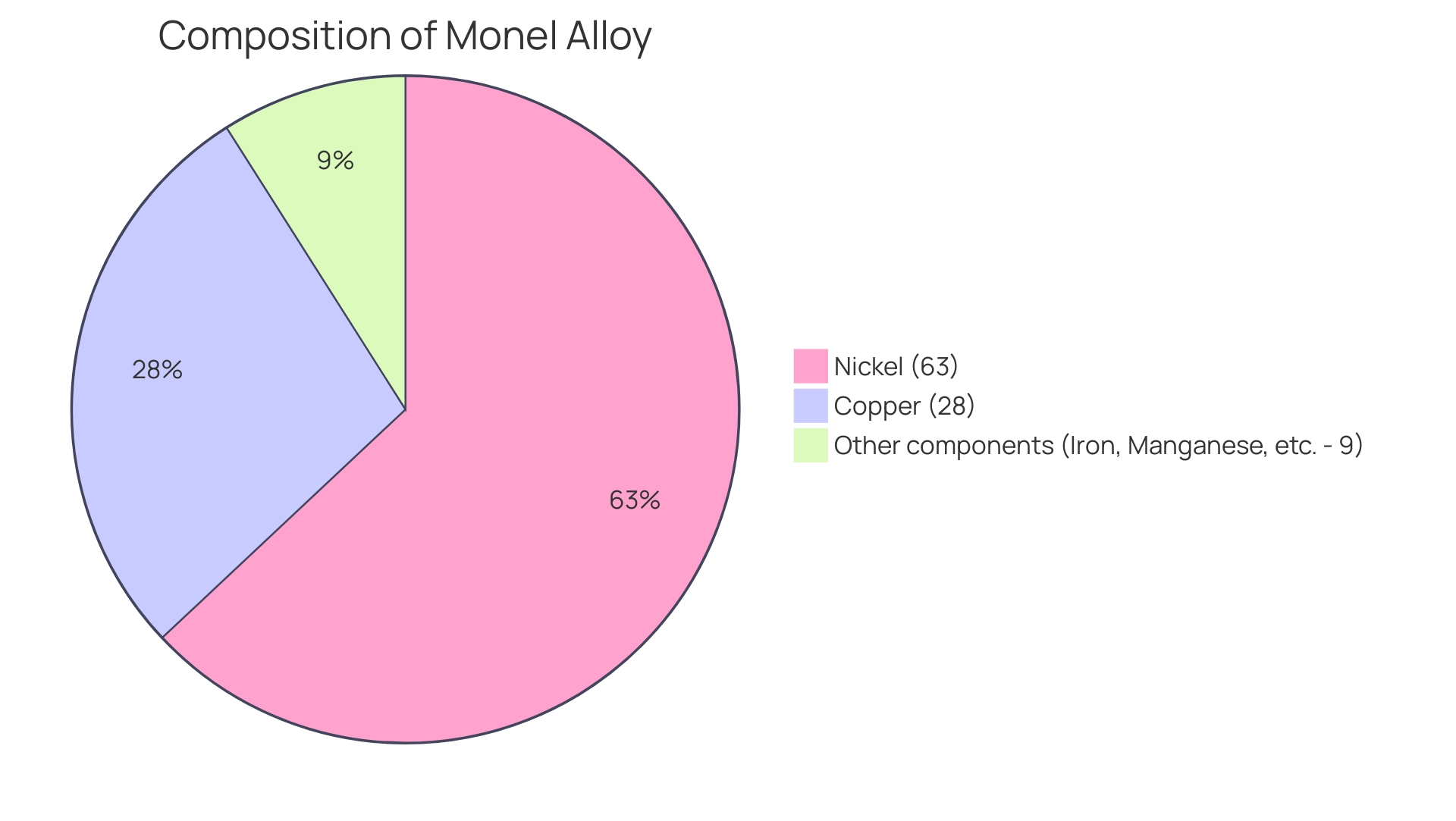
Market Trends and Pricing Factors for Monel
A variety of factors, particularly worldwide interest, raw material expenses, and geopolitical events, influence the monel price. Recently, the market has experienced fluctuations, with prices on the rise due to heightened nickel and copper costs in regions like the U.S. and Germany. The stability of alloy prices in the Middle East and Africa (MEA) region, which remained at USD 38,335 per metric ton for Alloy 400 Sheet CFR Jebel Ali in Q4 2023, highlights strong interest from the construction sector, a key consumer of these alloys.
According to Procurement Resource, the monel price of the alloy is expected to witness a mixed trend in the upcoming quarter, reflecting ongoing volatility in the market.
Procurement managers must remain vigilant regarding regional pricing variations, as local demand and competitive landscapes significantly affect pricing strategies. For instance, the Asian alloy sector witnessed a sharp increase in Alloy 400 prices in Q1 2022, driven by soaring crude oil and raw materials amidst geopolitical tensions. This case study exemplifies how external market dynamics can dramatically impact pricing trends.
Furthermore, environmental regulations and the availability of alternative materials contribute to the complexity of pricing for this material. Supply chain disruptions continue to pose challenges, particularly as they can lead to increased costs and delays in sourcing raw materials. This reinforces the necessity for procurement managers to monitor these trends closely, enabling them to make informed, strategic decisions and optimize costs in their procurement processes.
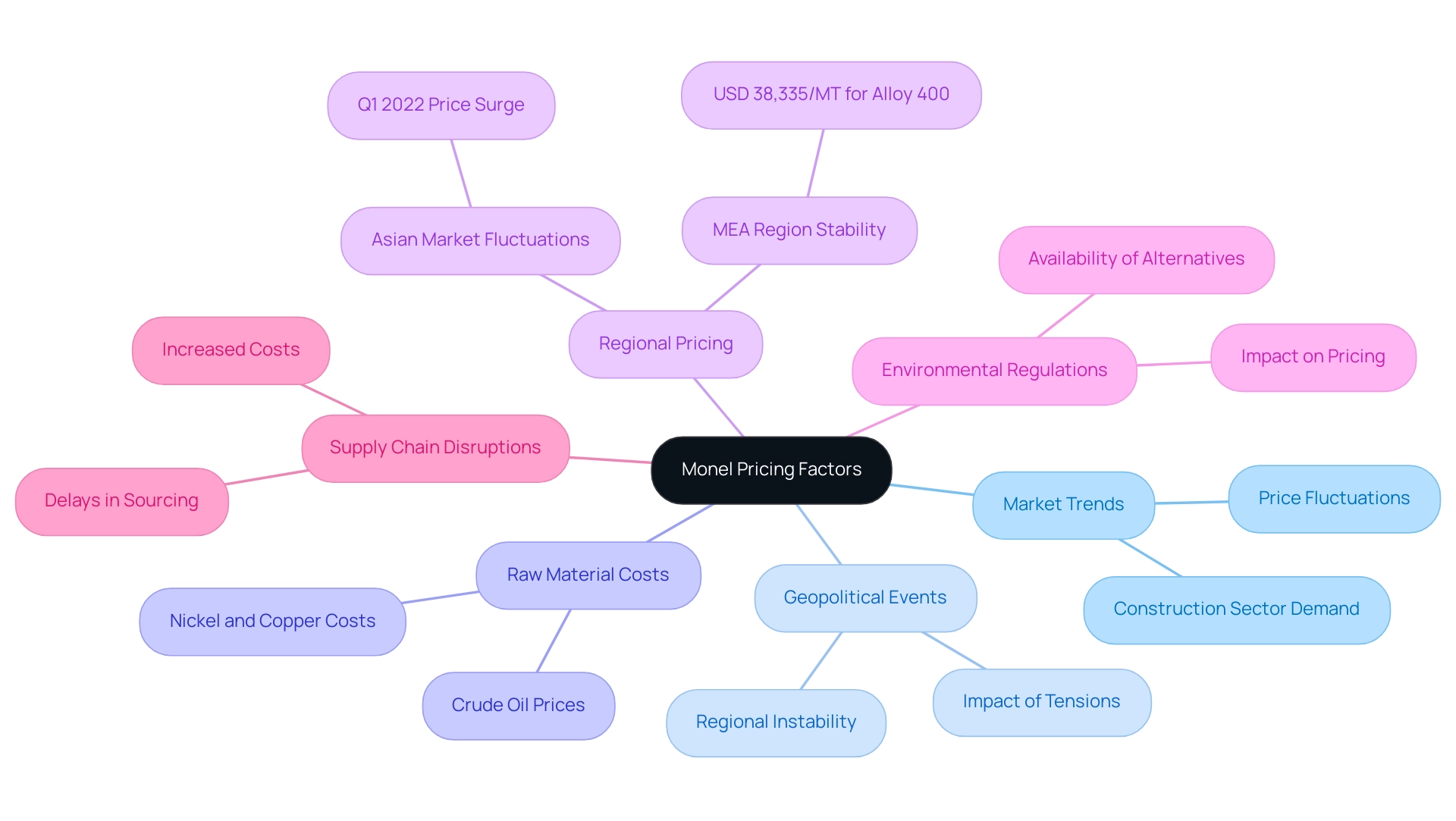
Global Supply Chain Considerations for Monel
The global supply network for this alloy is intricately influenced by various factors, including trade tariffs, shipping costs, and supplier reliability. While Monel materials are widely used in shipbuilding, chemical processing, the oil and gas industry, engine parts, and electrical connectors, it is also essential to recognize the significant role of copper nickel mixtures. These metal mixtures are favored in marine engineering for components such as ship hulls, offshore platforms, and seawater piping systems due to their superior corrosion resistance in saline environments, especially compared to stainless steel.
This advantage makes them invaluable in these applications, as they also exhibit better thermal and electrical conductivity, which is crucial for heat exchangers and electrical applications. Additionally, copper nickel alloys are utilized in automotive systems for brake lines and hydraulic systems, as well as in electronics, heat exchangers, and coinage. Recent trends show that in the first half of 2023, the monel price for the metal experienced a decline, largely due to low interest from downstream sectors and decreased production activities in China.
Moreover, the MEA region’s pricing landscape for the alloy in Q4 2023 revealed a slight downward trend, driven by decreased domestic demand and an uptick in supply in the UAE. Geopolitical tensions and natural disasters can further disrupt this supply chain, resulting in price increases and delivery delays. The case study titled ‘Asia-Pacific Metal Market Q1 2022‘ illustrates that rising crude oil and raw material prices previously led to significant market challenges, which remain relevant today.
Procurement managers must prioritize the development of strong, reliable relationships with multiple suppliers to ensure a consistent supply of the material. As noted by Procurement Resource, the monel price of the alloy is expected to witness a mixed trend in the coming quarter. Furthermore, the impact of trade tariffs on the supply chain cannot be overlooked, as they can affect pricing and availability.
- Diversifying sourcing strategies is vital in mitigating risks associated with dependency on a single supplier or geographic region, thereby fostering more resilient procurement practices.
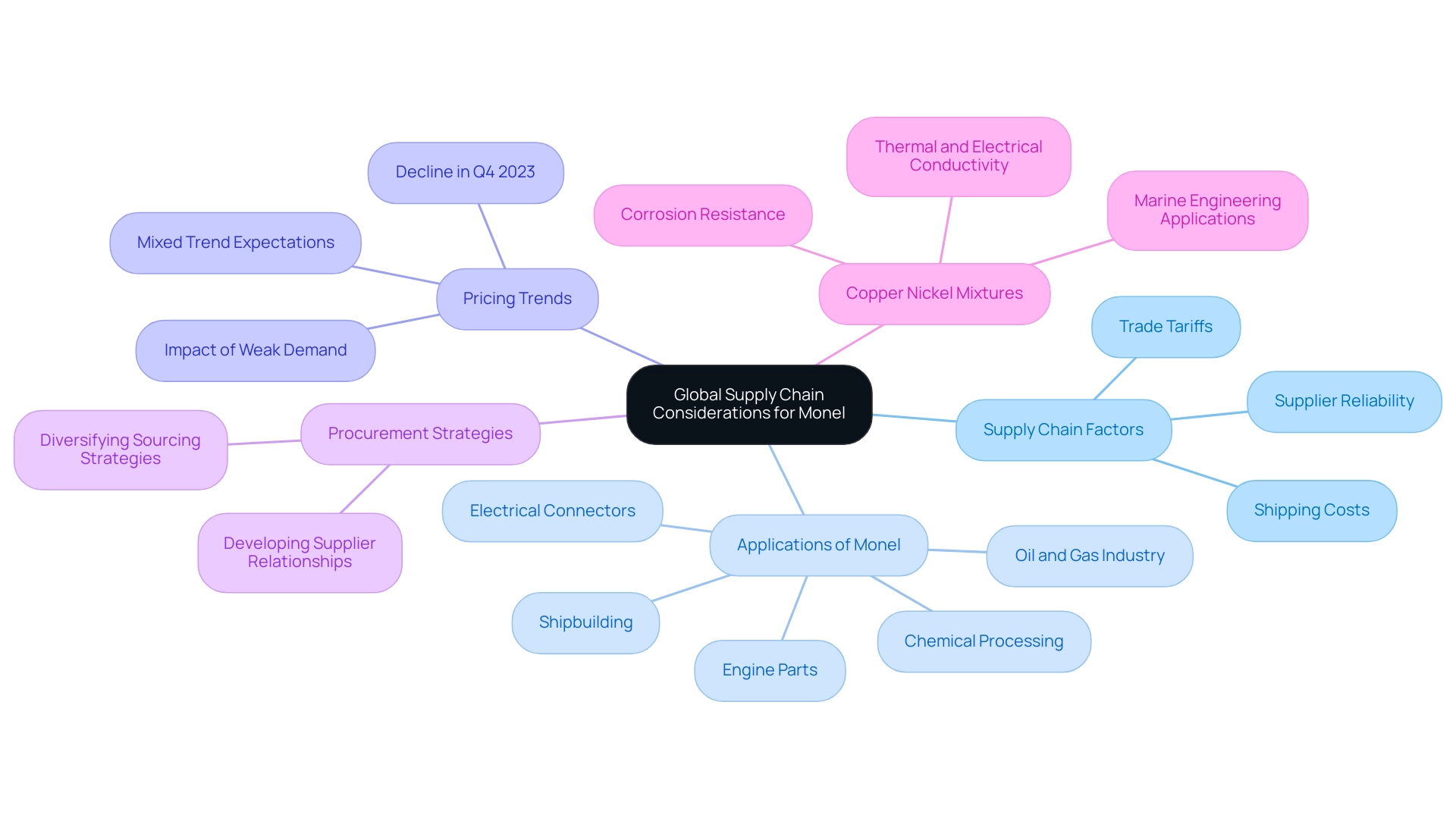
Applications of Monel in Industry
These alloys are widely recognized for their exceptional strength and corrosion resistance, making them invaluable across various industries. In the aerospace sector, this alloy is integral to the manufacturing of components such as valves and pumps, where reliability and performance under extreme conditions are paramount. The particular grades, including 400, 401, and 404, have been recognized for their substantial shares in 2024, emphasizing the demand for these materials in high-performance applications.
Furthermore, the cost for a single-user license of the Global Metal Research Report is 4350 USD, which provides insights into trends that procurement managers may find valuable. In marine engineering, the material’s ability to endure harsh sea conditions renders it an ideal choice for shipbuilding and offshore platforms, where durability is essential. Furthermore, the continuing effects of the Russia-Ukraine War and COVID-19 have created obstacles for the industry, impacting supply chains and economic dynamics.
In the chemical processing sector, this alloy’s resistance to corrosive environments allows its application in equipment that must endure aggressive substances. This multifaceted utility of these materials underscores the necessity for procurement managers to stay informed about these applications and the current market challenges, allowing for more accurate predictions of market needs and effective adjustments to procurement strategies in an evolving market landscape.
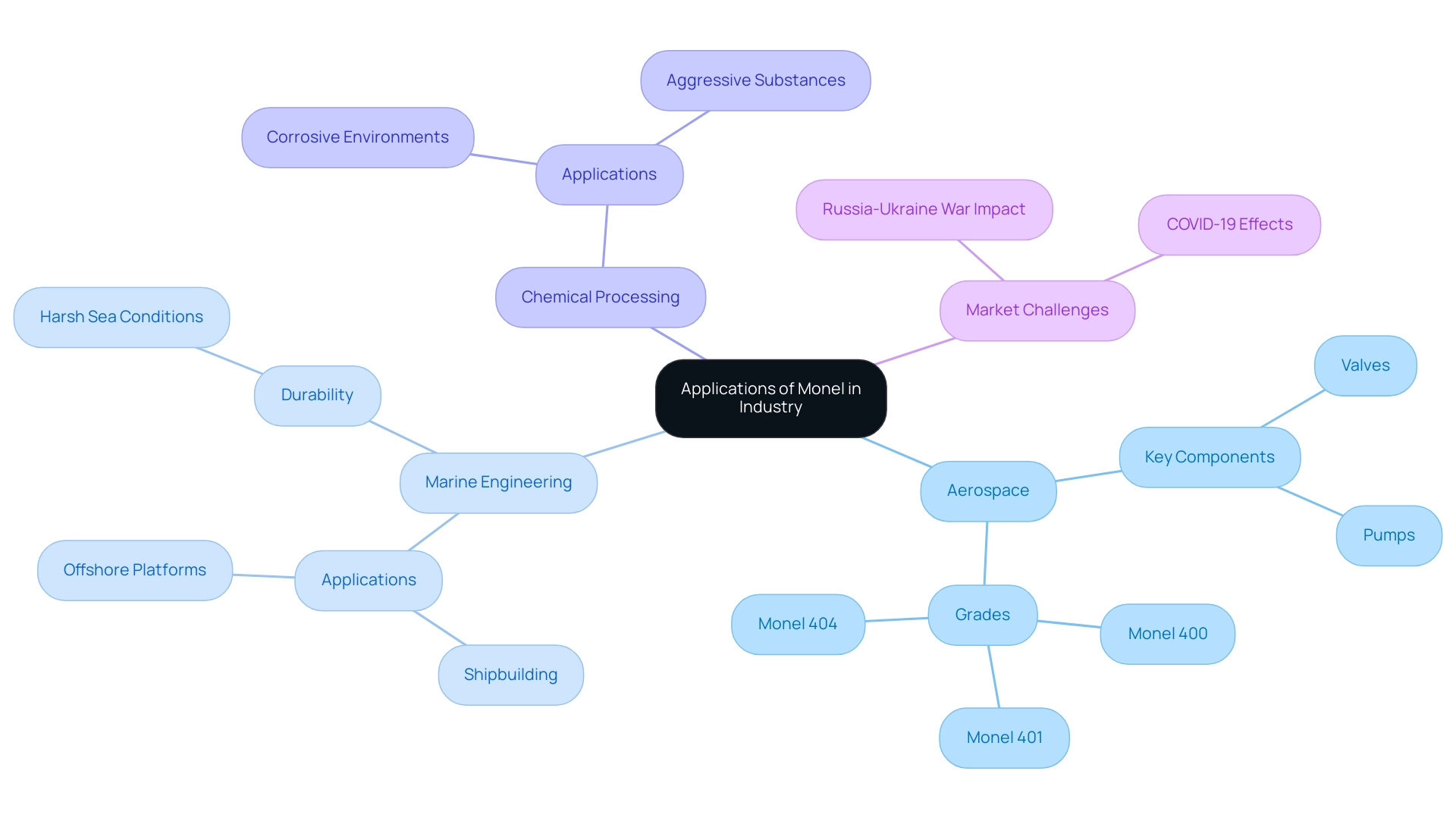
Future Outlook for Monel Pricing
The future pricing of these alloys, particularly the monel price, is set to be greatly influenced by continuous technological progress in alloy production and variations in worldwide need. According to the case study titled ‘Impact of Technological Change on Metal Consumption,’ the need for various metals is closely linked to technological innovations. As industries increasingly adopt sustainable practices, the demand for high-performance materials like this alloy is likely to rise, potentially resulting in upward pressure on monel price.
However, it is essential to consider the countervailing effects of innovations in alternative materials and enhancements in recycling processes, which may limit the need for Money. Notably, while the demand for indium and cobalt has surged due to emerging technologies, metals like silver, tin, palladium, and platinum have experienced comparatively low growth, attributed to technology substitution and improvements in material efficiency.
Procurement managers must remain vigilant in monitoring these industry innovations and economic indicators that could herald shifts in the market landscape, thereby enabling them to adjust their sourcing strategies proactively.
Understanding these dynamics is critical for making informed decisions in an evolving marketplace.
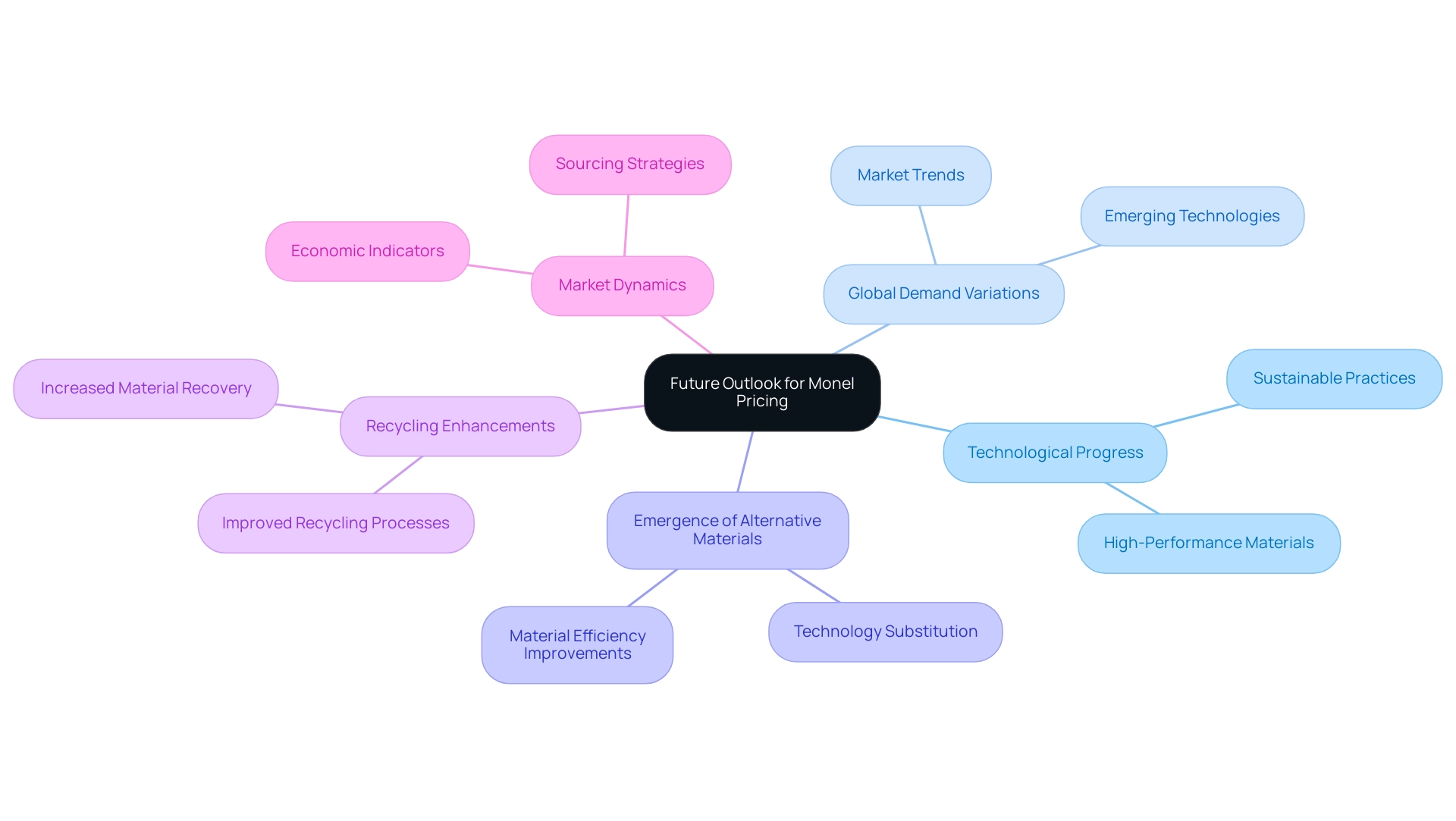
Conclusion
Monel alloys stand at the forefront of material science, offering exceptional strength and corrosion resistance that meet the rigorous demands of various industries. The intricate composition of these nickel-copper alloys, particularly Monel 400, renders them ideal for applications in aerospace, marine engineering, and chemical processing. As procurement managers navigate the nuances of sourcing these materials, awareness of market trends and pricing dynamics becomes paramount.
The complexities of Monel pricing are influenced by a multitude of factors, including:
- Global demand
- Raw material costs
- Geopolitical events
Recent fluctuations underscore the importance of regional pricing strategies, as local market conditions can significantly impact procurement decisions. Additionally, the global supply chain presents challenges that require robust supplier relationships and diversified sourcing strategies to mitigate risks associated with disruptions.
Looking ahead, the future of Monel pricing will likely be shaped by technological advancements and evolving industry needs. As the push for sustainable practices gains momentum, the demand for high-performance materials like Monel may increase, potentially driving prices upward. However, the emergence of alternative materials and enhanced recycling processes could also influence this landscape.
In conclusion, staying informed about Monel’s properties, applications, and market dynamics is essential for procurement managers. By leveraging this knowledge, decision-makers can optimize their procurement strategies, ensuring they remain competitive in an ever-changing environment.




